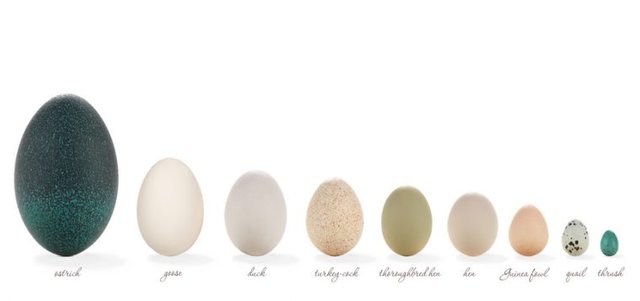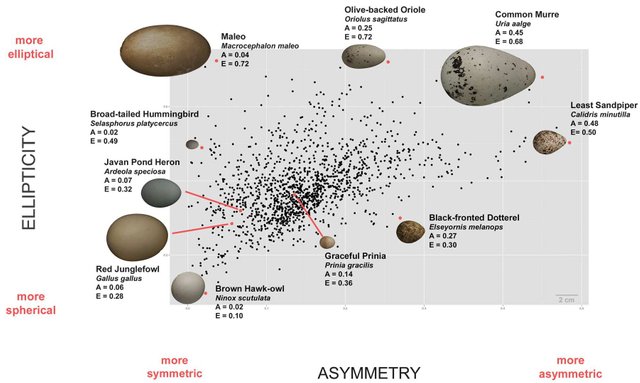Why do birds' eggs have such different shapes?
Bird eggs are not perfect spheres. And if you compare the little egg of a mushroom thrush with that of an ostrich, you will also see that not all eggs have the same shape or size. But what defines the shape and size of an egg?
Bird eggs have a variety of shapes and sizes despite a stereotyped design, elongated above and more rounded below. The Greek philosopher Aristotle thought that if the chick inside was a female, then the pointed end was sharper. We have come a long way since Aristotle, but the question still remains: but why are these eggs so different? In an attempt to answer the question, an international team of researchers recently studied the forms of 49,175 eggs covering 1,400 species (still present and extinct). The eggs, from the online database of the Museum of Vertebrate Zoology in Berkeley, were collected by naturalists in the late 19th and early 20th centuries. Using computer tools, the researchers quantified the asymmetry and ellipticity of each egg. The results were published in the site science.
They used these data to compare these two variables in the avian family tree, paying particular attention to parental nesting behavior, clutch size, feeding and flight capacity. In this way, they were able to correlate the diversified morphology of the eggs with other characteristics of the species :
Traditional explanations have long suggested that the long, pointed shape of eggs was to ensure that they did not roll too far from the nest. This new study suggests here that the shape of bird eggs is in fact influenced by their ability to fly: "Contrary to conventional assumptions, we have found that theft could influence the shape of the eggs. Birds with good flying ability tend to lay asymmetric or elliptical eggs. In addition, we suggest that it is the elastic membrane of the eggs, not the hard shell, that is responsible for the diversity of egg shapes that we see in nature, "explains lead researcher Mary Caswell Stoddard, University of Princeton.
Thus, having wings that makes the flight more efficient and allows birds to venture farther from the nest seems to agree with longer or sharper eggs. The researchers suggest that when the birds' bodies adapted for flight, this resulted in morphological changes such as small body size and reduced abdominal cavity. The birds were thus confronted with the need to have a large volume in the egg for optimal development of the chicks, while maintaining a profiled body for the flight. The birds solved the problem by laying eggs sharper and more elliptical.

